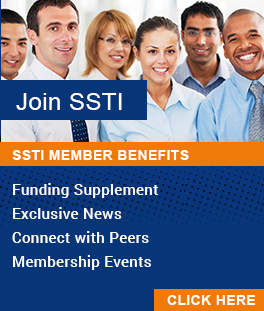Federal Reserve Bank of Atlanta investigates employer demand for AI skills
In 2024, nearly 628,000 job postings demanded at least one AI skill, according to research from the Federal Reserve Bank of Atlanta’s Center for Workforce and Economic Opportunity. The research also revealed that the percentage of all job postings requiring at least one AI skill increased from approximately 0.5% in 2010 to 1.7% in 2024. These numbers, however, do not inform workforce development practitioners or workers selecting training programs about which levels of education produce the most in-demand workers entering the AI-dominated workforce, nor do they indicate which occupations at what level of educational attainment have increasing demand for these skills. To provide these insights, the Fed researchers conducted an examination of the growth in employer demand for AI skills, analyzing online job posting data from 2010 to 2024.
Useful Stats: US patents: A shift towards foreign-owned IP?
Patents serve as a powerful tool that promotes the disclosure and diffusion of new innovations while allowing inventors an exclusive period to commercialize and profit from the technology. The U.S., while a hub for innovation and a leader in patents, has experienced stagnation in the growth of Patent Cooperation Treaty (PCT) applications and USPTO-granted utility patents in recent years. Ever since 2021, China has surpassed the U.S. in PCT applications, and more than half of all USPTO utility patents are owned by foreign entities, including Japan and the European Union.
This edition of Useful Stats explores U.S. Patent and Trademark Office (USPTO) and PCT patent data compiled from the National Center for Science and Engineering Statistics and data from the Business Enterprise R&D (BERD) survey. These data provide a background for how the patent landscape across the U.S. has changed over the past few decades.
New report from ICIC provides insights into the AI mindset of small businesses owners
If you are an entrepreneurship service organization (ESO), you likely are seeing more companies within your scope adopting artificial intelligence (AI). But how well do you understand their needs for further assistance with the transformative platform technology? A recent report from the Initiative for a Competitive Inner City (ICIC), “How small business owners are learning, using, and navigating challenges with AI tools,” sheds light on what your companies may be experiencing and offers some recommendations. The findings are based on 3,752 business owners nationwide who responded to an ICIC survey, as well as five focus groups.
The US needs more workers with non-bachelor’s credentials
Two recent research reports, one from Georgetown University's Center on Education and the Workforce (CEW) and another from Ivy Tech Community College, in collaboration with TEConomy Partners, LLC, focus on credential shortages that are keeping many jobs that don't require a bachelor's degree unfilled.
Recent Research: ASPI Report says U.S. cedes lead in critical technologies research
The Australian Strategic Policy Institute’s (ASPI) report, ASPI’s two-decade Critical
Technology Tracker: The rewards of long-term research investment, aims to identify
which countries and institutions are leading in high-impact research across 64 critical
technological domains, including defense, space, energy, environment, artificial
intelligence, biotechnology, robotics, cyber, computing, advanced materials, and
quantum technologies. The tracker's methodology involves analyzing the top 10% of
highly cited research publications in each critical technology. According to ASPI, this
approach emphasizes research that significantly influences the technological lifecycle
and is likely to lead to patents and breakthroughs. The dataset spans from 2003 to
2023, allowing for both short-term (five-year) and long-term (21-year) trend analyses.
The report’s key finding is a change in global leadership. Data from the first five years
Federal obligations for higher-ed S&E near an inflation-adjusted all-time high in 2023
In fiscal year (FY) 2023, federal obligations for science and engineering (S&E) to universities and colleges totaled $49 billion—$29 billion more than FY 2000, and a 10% increase from the prior year. The growth is less rapid when adjusted for inflation (2017 USD), with just over $40 billion in real obligations in FY 2023, a 5% increase over the year prior and $12.6 billion (or 46%) increase over the FY 2000 value. Each year, approximately 90% of these federal obligations for higher education S&E are allotted to R&D activities, directly supporting key innovation activities nationwide.
This article uses data from The Survey of Federal Science and Engineering Support to Universities, Colleges, and Nonprofit Institutions—the sole source of comprehensive, institutional-level data on federal science and engineering funding to academia and nonprofits—to provide breakdowns of federal obligations for S&E to universities and colleges at the national and state levels.
How organizations use BIO to advance their TBED goals
Many SSTI members will attend the annual BIO International Convention, which will be held this year in Boston from June 16 to 19. There, they join a cohort of organizations with various connections to the life sciences, including contract research and manufacturing companies, academic centers, "big" pharma, "little" pharma, and foreign nations representing their life sciences efforts.


